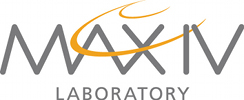In this workshop we therefore wish to offer users an opportunity to influence the design of such a branchline at an early stage. The outcome of the workshop should serve as essential input, either when a successful result of the Phase IIa application awards funding for the SoftiMAX beamline, or towards the Phase IIb application that will be submitted in March 2014.
The workshop is open to our entire user community, but registration in advance is required. The number of attendees is limited to 50, and participation will be on a first come first serve basis.
In order to promote discussion we invite possible present and future STXM users to submit an abstract for a presentation of their own research, to form a starting point for real experiments and wishes for the STXM end-station and branchline at MAX IV. From the entrees 5-10 presentations can be selected.
A list of hotels/B&Bs in Umeå can be found on the useful information page. A dinner, two lunches and coffee breaks are included in the workshop, for which there is no registration fee. We will update information regarding the program/workshop’s facilities on this page regularly.
DATE: 10-11 December, 2013
VENUE: “Aspen” lecture room at SLU, Umeå
ORGANISERS: Karina Thånell (Schulte) – karina.thanell@maxlab.lu.se
This workshop receives funding from a STINT initiation grant


